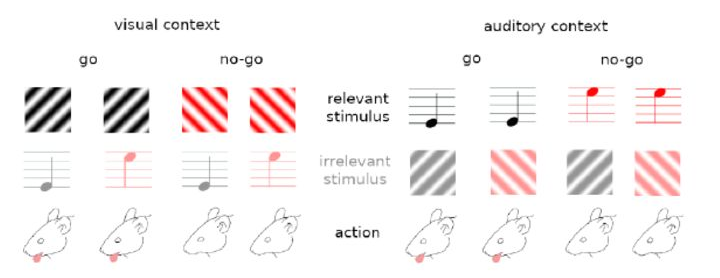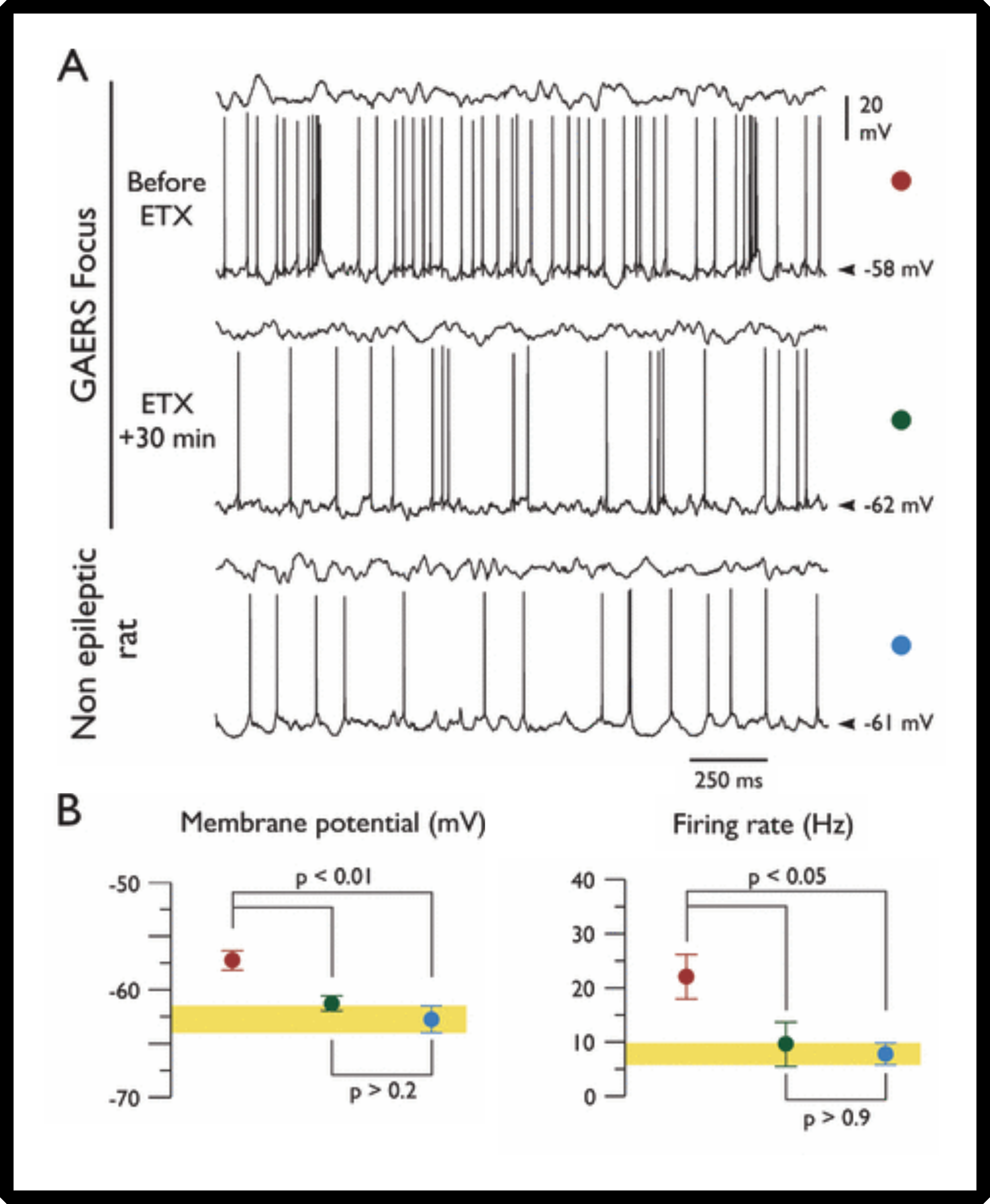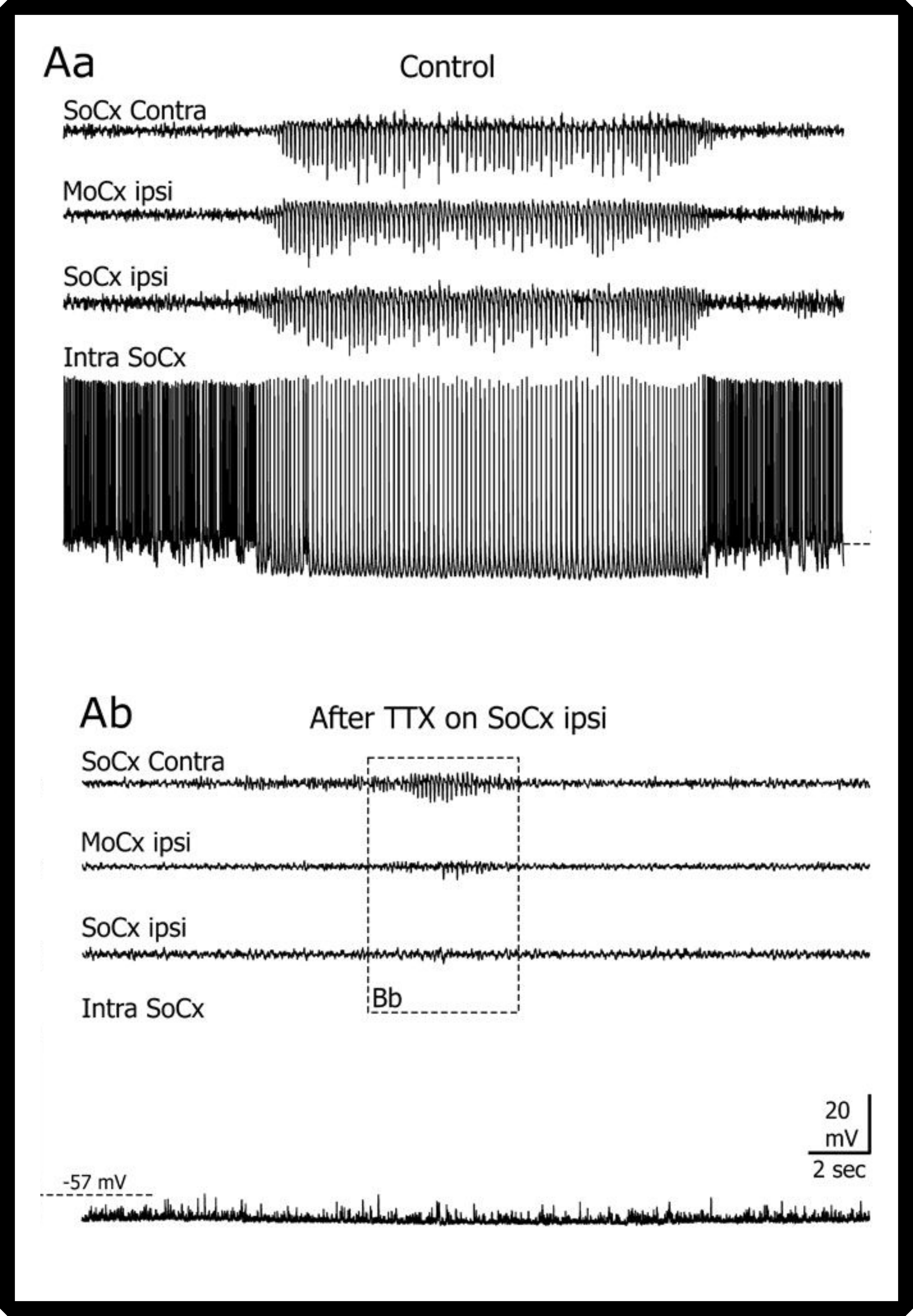Preprints
Preprint are manuscript that we published on repository such as bioRxiv before they are peer-reviewed. We are doing our best so the science that you will find there is accurate and reproducible, yet those results need to be validated by other neuroscientists during the peer-review process
Published
You will find here our articles published in peer review journals
Behavioral context representation in the visual cortex during perceptual tasks
Hajnal, M.A., Tran, D., Einstein, M., Vallejo Martelo M., Safaryan K., Polack P-O. *, Golshani P. * and Orbán G. * (2023) Continuous multiplexed population representations of task context in the mouse primary visual cortex. Nature Communications 14, 6687. * equal contribution Effective task execution requires the representation of multiple task-related variables that determine how stimuli lead to correct responses. Even the primary visual cortex (V1) represents other task-related variables such as expectations, choice, and context. However, it is unclear how V1 can flexibly accommodate these variables without interfering with visual representations. We trained [...]
Establishing the functional connectivity in the visual cortex
Khdour H.Y., Kondabolu K., Khadka A., Assous M., Tepper J., Tran T., and Polack P-O. (2022) Neuropilin 2/Plexin-A3 Receptors Regulate the Functional Connectivity and the Excitability in the Layers 4 and 5 of the Cerebral Cortex. The Journal of Neuroscience. 42(24):4828–4840 The functions of cortical networks are progressively established during development by series of events shaping the neuronal connectivity. Synaptic elimination, which consists of removing the supernumerary connections generated during the earlier stages of cortical development, is one of the latest stages in neuronal network maturation. The semaphorin 3F coreceptors neuropilin 2 (Nrp2) and [...]
Generalization in the Primary Visual Cortex
Corbo J., McClure J.P., Erkat O.B., and Polack P-O. (2022) Dynamic distortion of orientation representation after learning in the mouse primary visual cortex. The Journal of Neuroscience. 42(21):4311–4325 We found that after perceptual training the information on the visual stimuli is modified in V1 to facilitate learning or perception. Indeed, we showed that when a mouse learns to discriminate between two oriented cues (e.g., vertical, and horizontal bars), the patterns of neuronal activity evoked in V1 by those stimuli (we call those specific patterns the representations of the stimuli in V1) are more accurate and [...]
Sound modulation in V1 depends on the behavioral relevance of the visual cue
McClure J.P., Erkat O.B., Corbo J., and Polack P-O. (2022) Estimating how Sounds Modulate Orientation Representation in the Primary Visual Cortex using Shallow Neural Networks. Frontiers in Systems Neuroscience. 16(869705):1-15. Audiovisual perception results from the interaction between visual and auditory processing. Hence, presenting auditory and visual inputs simultaneously usually improves the accuracy of the unimodal percepts, but can also lead to audiovisual illusions. Cross-talks between visual and auditory inputs during sensory processing were recently shown to occur as early as in the primary visual cortex (V1). In a previous study, we demonstrated that sounds [...]
V1 multiplexing from an intracellular point of view
Gáspár M.E., Polack P-O., Golshani P., Lengyel M., and Orban G. (2019) Representational untangling by the firing rate nonlinearity in V1 simple cells. eLife. 8(e43625):1-30. An important computational goal of the visual system is ‘representational untangling’ (RU): representing increasingly complex features of visual scenes in an easily decodable format. RU is typically assumed to be achieved in high-level visual cortices via several stages of cortical processing. Here we show, using a canonical population coding model, that RU of low-level orientation information is already performed at the first cortical stage of visual processing, but not [...]
Sounds improve the encoding of visual information
McClure J.P., and Polack P-O. (2019) Pure tones modulate the representation of orientation and direction in the primary visual cortex. Journal of Neurophysiology. 121(6): 2202-2214 In this article, we show that, in the presence of sounds, the neuronal population recruited by an oriented visual stimulus in the primary visual cortex (a.k.a. representation of the visual stimulus in V1) is better tuned to the visual stimulus that the population recruited when the same visual stimulus is presented in the unimodal condition. This better representation in the audiovisual context is due to a better recruitment of [...]
An alpha-like rhythm reduces visual processing in V1
Einstein M.C.*, Polack P-O.*, Tran D., and Golshani P. (2017) Visually evoked 3-5 Hz membrane potential oscillations reduce the responsiveness of visual cortex neurons in awake behaving mice. The Journal of Neuroscience. 37(20):5084-5098. * equal contribution. Low-frequency membrane potential (Vm) oscillations were once thought to only occur in sleeping and anesthetized states. Recently, low-frequency Vm oscillations have been described in inactive awake animals, but it is unclear whether they shape sensory processing in neurons and whether they occur during active awake behavioral states. To answer these questions, we performed two-photon guided whole-cell Vm recordings [...]
Visual processing improves with locomotion
Polack P-O., Friedman J., and Golshani P. (2013) Cellular mechanisms of brain state-dependent gain modulation in visual cortex. Nature Neuroscience 16(9): 1331–1339. In this article, we show that the neurons located in layer 2/3 and 4 of the primary visual cortex (V1) are more depolarized during locomotion than during the stationary periods. The spontaneous activity (i.e. the action potential discharge when no stimulus is presented) is not affected by this depolarization because the fluctuations of membrane potential decrease in amplitude. However, the response of the neurons to their preferred orientation is enhanced. Our data [...]
Epilepsy
During his PhD, Pierre-Olivier worked on the neuronal mechanisms underpinning the initiation and propagation of absence seizures.
All our articles in pdf format
You will find here our articles published in peer review journals
Corbo, J., Erkat O.B., McClure J.M., Khdour H.Y., and Polack P-O. (2022) Category representations in the primary visual cortex support orientation discrimination. bioRxiv 2022.05.13.491867.
Hajnal M., Tran D., Szabó Z., Albert A., Safaryan K., Einstein M., Vallejo Martelo M., Polack P-O., Golshani P., Orbán G. (2023). Shifts in attention drive context-dependent subspace encoding in anterior cingulate cortex during decision making. bioRxiv 2023.10.10.561737
Hajnal, M.A., Tran, D., Einstein, M., Vallejo Martelo M., Safaryan K., Polack P-O. *, Golshani P. * and Orbán G. * (2023) Continuous multiplexed population representations of task context in the mouse primary visual cortex. Nature Communications 14, 6687. * equal contribution
Khdour H.Y., Kondabolu K., Khadka A., Assous M., Tepper J., Tran T., and Polack P-O. (2022) Neuropilin 2/Plexin-A3 Receptors Regulate the Functional Connectivity and the Excitability in the Layers 4 and 5 of the Cerebral Cortex. The Journal of Neuroscience. 42(24):4828–4840
Corbo J., McClure J.P., Erkat O.B., and Polack P-O. (2022) Dynamic distortion of orientation representation after learning in the mouse primary visual cortex. The Journal of Neuroscience. 42(21):4311–4325
McClure et al., 2022
McClure J.P., Erkat O.B., Corbo J., and Polack P-O. (2022) Estimating how Sounds Modulate Orientation Representation in the Primary Visual Cortex using Shallow Neural Networks. Frontiers in Systems Neuroscience. 16(869705):1-15.
Gáspár et al., 2019
Gáspár M.E., Polack P-O., Golshani P., Lengyel M., and Orban G. (2019) Representational untangling by the firing rate nonlinearity in V1 simple cells. eLife. 8(e43625):1-30.
McClure J.P., and Polack P-O. (2019) Pure tones modulate the representation of orientation and direction in the primary visual cortex. The Journal of Neurophysiology. 121(6): 2202-2214.
Einstein M.C.*, Polack P-O.*, Tran D., and Golshani P. (2017) Visually evoked 3-5 Hz membrane potential oscillations reduce the responsiveness of visual cortex neurons in awake behaving mice. The Journal of Neuroscience. 37(20):5084-5098. * equal contribution.
Polack P-O., Friedman J., and Golshani P. (2013) Cellular mechanisms of brain state-dependent gain modulation in visual cortex. Nature Neuroscience. 16(9): 1331–1339.
Polack P-O., and Contreras D. (2012) Long-range parallel processing and local recurrent activity in the visual cortex of the mouse. The Journal of Neuroscience. 32(32): 11120–11131.
Gdalyahu A., Tring E., Polack P-O., Gruver R., Golshani P., Fanselow MS., Silva AJ., and Trachtenberg JT. (2012) How associative learning alters stimulus encoding in primary sensory cortex. Neuron. 75: 121–132.
Chipaux M., Charpier S. and Polack P-O. (2011) Chloride-mediated inhibition of the ictogenic neurones initiating genetically-determined absence seizures. Neuroscience. 192: 642–651.
Langlois M., Polack P-O., Bernard H., David O., Charpier S., Depaulis A., and Deransart C. (2010) Involvement of the thalamic parafascicular nucleus in mesial temporal lobe epilepsy. The Journal of Neuroscience. 30(49): 16523–35.
Polack P-O., Mahon S., Chavez M. and Charpier S. (2009) Inactivation of the somatosensory cortex prevents paroxysmal oscillations in cortical and thalamic neurons in a genetic model of absence epilepsy. Cerebral Cortex. 19(9): 2078–91.
Polack P-O., and Charpier S. (2009) Ethosuximide converts ictogenic neurons initiating absence seizures into normal neurons in a genetic model. Epilepsia. 50(7): 1816–1820.
Polack P-O., Guillemain I., Hu E., Deransart C., Depaulis A. and Charpier S. (2007). Deep layer somatosensory cortical neurons initiate generalized spike-and-wave discharges in a rat genetic model of absence epilepsy. The Journal of Neuroscience. 27(24): 6590–6599.
Polack P-O., and Charpier S. (2006). Intracellular activity of cortical and thalamic neurones during high-voltage rhythmic spike discharge in Long-Evans rats in vivo. The Journal of Physiology. 571 (Pt 2): 461–476.
Any questions?
If you have questions about our work, or would like to have access to some of our publications














